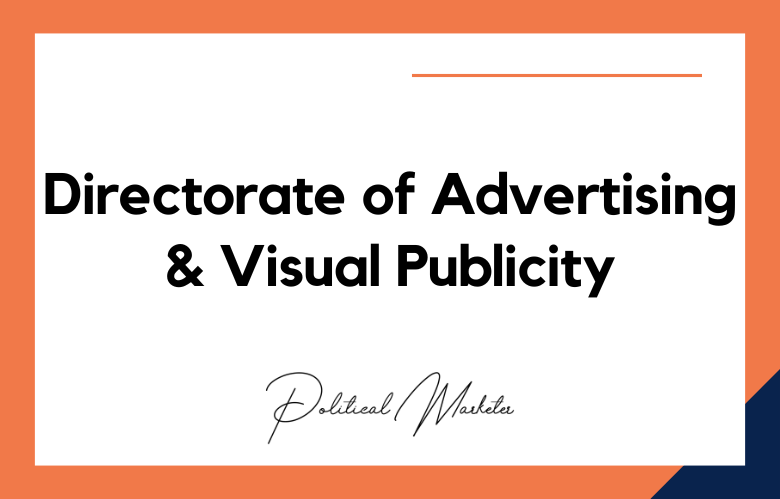Political campaigns are no longer confined to traditional television advertisements or billboard posters. Technology has given us innovative ways to communicate our message, and video advertising is one of the most powerful mediums available today.
In the age of social media, it’s more vital than ever that political candidates can reach a wider audience with a persuasive message. In this post, we’ll discuss why video advertising is so effective and how it can be used in political campaigns to reach and engage voters.
The Power of Video Advertising for Political Campaigns: Captivate and Conquer
As political campaigns become more competitive, video advertising has become crucial for candidates to gain an edge over their opponents.
With the widespread use of social media platforms, television, and online video streaming services, video advertising has the potential to reach millions of potential voters in the shortest possible time.
Indeed, video advertising has been a critical component of political campaigns since the famous “Daisy Girl” ad from the 1964 Presidential Election. In this blog post, we will explore the power of video advertising for political campaigns and how it can sway voters in your favor.
Harnessing the Power of Video Advertising for Political Campaigns
In today’s world, video advertising has become one of the most effective tools for political campaigns. From presidential elections to local contests, videos have proven to be essential for shaping public opinion and winning votes.
Video advertising allows political candidates to communicate their message to a large audience in an engaging and relatable way. In this blog post, we will explore how political campaigns are using video advertising to their advantage and the potential benefits it can offer.
The power of video advertising lies in its ability to evoke stories, emotions, and messages simply and effectively.
Political campaigns have leveraged this power to create content that resonates with their target audience. Campaign ads that use video are more memorable and can leave a lasting impression on voters.
Video Gets More Engagement
The average social media user watches over 100 million hours of video per day, according to forgottenschroll.com. In contrast, text posts only have a lifespan of 24 hours on social media platforms.
Video advertising allows political campaigns to create visually appealing and engaging content that stays with their target audience longer. It improves engagement, and viewership leads to more shares, increasing the campaign’s organic reach.
Creates Emotional Connection
Video advertising has an unmatched ability to create authentic emotional connections between the audience and the campaign. Through video advertising, political campaigns can convey their messages with greater clarity and impact than text posts.
With video advertising, campaigns can tell stories and inspire their target viewers to act and support the campaign cause. It helps campaigns create an emotional bond with their voters that assists in motivating voters to show up at the polls to cast their votes.
Increases Reach and Brand Awareness
Conversions often measure Digital Advertising’s success. In politics, conversion rates can translate into vote margins. Video advertising is an excellent way to increase conversions and reach.
With video advertising, political campaigns can get exposure to a larger audience and target the most engaged voters. Video advertising also helps campaigns create brand awareness since people are more interested in sharing video content than static content.
Cost-Effective Advertising
Video advertising doesn’t have to be expensive. While producing high-quality video advertising requires financial resources, campaigns can also be successful through user-generated content, mobile phone videos, or video content made by local volunteers and supporters.
There are also online platforms available for creating short video ads at an affordable price. In comparison to traditional forms of advertising like print, radio, and television, video advertising is a cost-effective option for political campaigns of all sizes.
Video Advertising Allows for Better Targeting
Video advertising also offers better-targeting abilities than traditional forms of advertising. Political campaigns can leverage variable data sets and choose from various demographic, behavioral, geographical, and contextual targeting options to ensure their message is put in front of suitable viewers at the appropriate time.
Video advertising software may also generate data for campaigns to measure efficiency and make intelligent, data-driven decisions on future advertising or messaging.
Video Advertising is Engaging:
People are likelier to remember a message when delivered through a video advertisement rather than through text or static images. Videos are engaging and provide a more immersive experience that creates an emotional connection with the viewer. Political campaigns can leverage this emotional connection to build trust and create long-lasting impressions.
Social Media is the Perfect Platform for Video Advertising:
Social media sites such as Facebook, Twitter, and Instagram have billions of users worldwide, making them the perfect platforms to share video advertising campaigns.
By creating shareable content, political campaigns can increase their reach exponentially, creating a viral effect that can drive conversations about the campaign. Social media metrics such as likes and shares can also provide valuable feedback on campaign performance.
Sensitive Issues can be Tackled with Care:
With video advertising, candidates can explain their opinions on specific issues and address criticisms sensitively and respectfully.
This can help create a more positive message, which is beneficial in politics, where criticisms can often be contentious and divisive. By using video advertisements to explain complex ideas, campaigns can provide clarity and transparency, boosting trust with their constituents.
Lower Costs Compared to Traditional Advertising:
Video advertising is often cheaper than traditional TV or print media ads, providing campaigns with a cost-effective advertising solution. Political campaigns often run on tight budgets, and video advertising allows campaigns to reach the same number of voters with their message without breaking the bank.
The Use of Influencers:
Video advertising can be coupled with the use of social media influencers who have large followings. Influencers can help campaigns reach a wider audience and associate the influencer with the campaign.
This can build trust amongst younger audiences often influenced by their preferred influencers, making video advertising a great way to target specific demographics.
Conclusion:
In conclusion, video advertising has become indispensable for successful political campaigns. It’s engaging, shareable, and cost-effective, providing a platform to tackle sensitive issues with care while building trust and authority with the constituents.
Political campaigns that utilize video advertising in their campaign strategy can reach a wider audience while staying within budget and driving engagement. The power of video advertising should not be underestimated, and it’s a must-have tool in every political strategist’s toolbox.
Call: +91 9848321284
Email: [email protected]
Power of Video Advertising for Political Campaigns: FAQs
What Is Video Advertising In Political Campaigns?
It’s the use of recorded video—on TV, social media, streaming platforms—to communicate campaign messages and influence voters.
Why Is Video Advertising Powerful in Politics?
Because it combines audio and visual storytelling to evoke emotion, explain policy, and build candidate recognition quickly.
What Types of Video Ads Are Commonly Used?
Campaigns often use testimonial videos, issue-focused ads, candidate introductions, event highlights, and short-form content for social sharing.
How Do Platforms Influence Video Ad Strategy?
Different platforms (TV, YouTube, Facebook, OTT) require tailored formats—like length, aspect ratio, and messaging style—for effectiveness.
What Are Short‑Form Videos and Why Do They Matter?
These are clips under 2 minutes designed for social media—ideal for grabbing attention, maximizing shares, and boosting engagement.
How Does Targeting Work With Digital Video Ads?
Campaigns use demographics, geography (e.g., ZIP codes), interests, and past behavior to deliver ads to specific voter segments.
Can Video Ads Be Used For Live Campaign Moments?
Yes—live streaming debates, rallies, Q&As, and behind-the-scenes clips help campaigns connect authentically and in real time.
What Metrics Should Campaigns Track for Video Performance?
Key metrics include views, watch time, click-through rates, engagement (likes/comments/shares), and conversion actions.
Is Video Advertising Cost‑Effective for Campaigns?
Yes—digital video often costs less than TV, can be scaled dynamically, and allows precise targeting to reduce waste.
How Do Video Ads Build Name Recognition?
Frequent video exposure—especially on repeat platforms—makes a candidate’s face and message more familiar to voters.
Can Video Advertising Influence Voter Emotion?
Absolutely—carefully crafted visuals and narratives can drive emotional responses and persuasion more effectively than text.
What Role Does Creative Storytelling Play?
Compelling narratives, personal stories, and issue-based dramatizations make video ads memorable and engaging.
How Should Campaigns A/B Test Video Ads?
By running multiple versions with different messaging, visuals, or calls-to-action, and comparing performance.
Why Use Connected TV (CTV) in Campaign Strategy?
CTV combines the impact of TV with targeting precision and measurement tools typical of digital advertising.
Can Video Ads Support Fundraising?
Yes—video appeals personalized to audiences can drive donations by emotionally connecting and making ask clear.
How Do Campaigns Leverage Social Sharing of Videos?
Short, emotive content encourages likes, comments, and shares, increasing organic reach and message spread.
What Is the Role of Analytics in Video Campaigns?
Analytics guide strategy, identify effective content, and allow campaigns to optimize budgets in real time.
How Do Campaigns Ensure Video Ads Are Legally Compliant?
By including disclaimers (“Paid for by…”), following platform ad rules, and complying with election laws.
Why Incorporate Video Into Multichannel Campaigns?
It enhances cohesion—supporting TV, print, radio, and digital touchpoints with consistent visual messaging.
What Future Trends Are Emerging in Political Video Advertising?
Expect AI-generated ads, interactive video, AR/VR engagement, hyper-local targeting, and real-time personalization.










